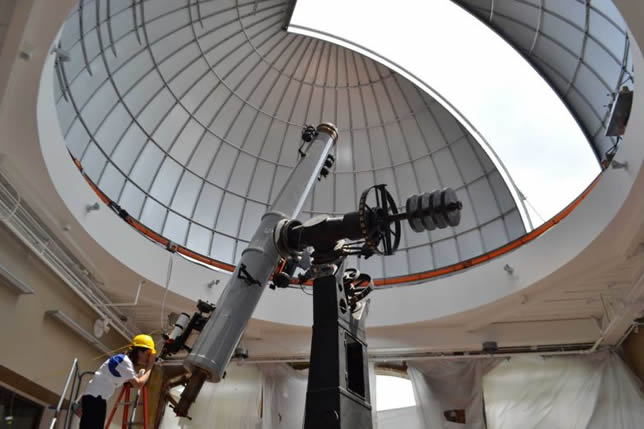South Carolina To Give Students Statewide Remote Access to Telescope
Beginning August 16, every classroom in South Carolina will be
able to view the rings of Saturn or the Orion Nebula via a vintage
telescope at the South
Carolina State Museum in Columbia, SC.
The 1926 Alvan Clark 12 3/8-inch refracting telescope, built
in 1926 and housed for 70 years at the Rutherfurd Observatory at
Columbia University in New York, will be part of a 75,000-square-foot
expansion and renovation project at the museum that opens August 16.

Students all over the state will be able to control the
telescope and connect through real-time distance learning with museum
astronomy staff directly from their classrooms. A grant from Boeing
South Carolina also is providing funding to train teachers to operate
the telescope from each of their own schools.
According to state museum officials, this will be the first
time in the United States that students from throughout an entire state
will have direct access to a vintage telescope.
"Our goal is to help bridge the education access gap across South Carolina by delivering STEM resources
directly into classrooms," said museum Executive Director Willie
Calloway."This will revolutionize the way in which educators
can integrate astronomy into their teaching."
Despite the fact the Clark telescope is more than 80 years
old, it has a new computer control system that allows it to point at
celestial objects quickly and accurately. A solar telescope, as well as
an imaging camera for more distant objects, is mounted to the Clark
telescope to provide more viewing options and access. The observatory
also features an outdoor viewing terrace and a classroom, which will
serve as a space for onsite student and teacher instruction.
The newly expanded portion of the museum, to be called
"Windows to New Worlds," is part of a statewide initiative to enhance
its science, technology, engineering and mathematics (STEM)
distance-learning initiative. The museum now will also include a new
planetarium and a 4D theater.
About the Author
Michael Hart is a Los Angeles-based freelance writer and the former executive editor of THE Journal.